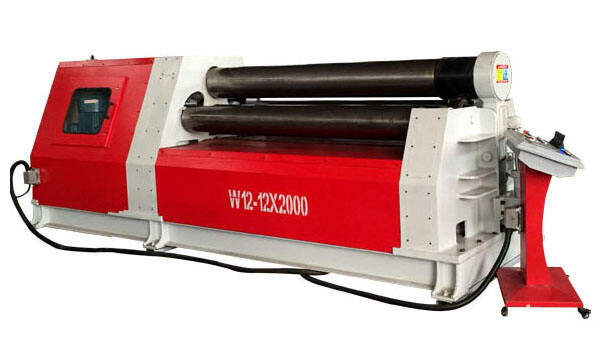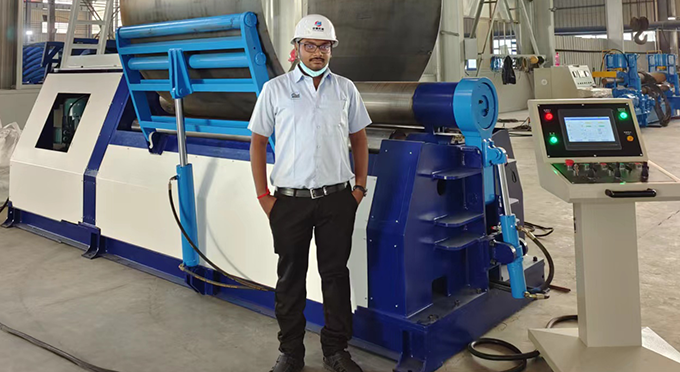The Fundamental Science of Laser Cutting Technology
Photon Energy Conversion in Material Processing
Laser cutting technology harnesses photon energy to precisely interact with materials, mainly through atomic energy transfer. This process begins when a laser beam emits photons, which are absorbed by the material's atoms. This absorption leads to increased atomic energy levels, causing the material to alter its structure either by melting, vaporizing, or undergoing other transformations. The efficiency of this energy transfer is pivotal in determining the effectiveness of laser cutting across different materials, depending largely on photon energy density relative to the material's type and thickness. For instance, materials like steel, wood, and ceramics respond differently, requiring tailored photon energy densities for optimal results.
Several industries have significantly benefited from laser cutting technology due to its ability to precisely convert photon energy for material processing. The electronics sector utilizes it for manufacturing complex circuit components where precision is crucial. In the automotive industry, laser cutting is invaluable in crafting intricate parts that meet stringent design specifications. The adaptability of laser cutting machines allows for seamless integration into diverse manufacturing processes.
Thermal Dynamics of Material Vaporization
Thermal dynamics play a crucial role in the vaporization process during laser cutting, involving intricate interactions between heat conduction, convection, and radiation. Initially, the intense heat from the laser causes the material's surface temperature to rise rapidly, triggering heat conduction where energy dissipates through the material. Simultaneously, convection helps distribute this heat more evenly, while radiation expels excess energy, facilitating efficient vaporization. The interplay of these thermal behaviors determines how effectively different materials can be vaporized by laser technology.
For effective vaporization, precise temperature thresholds must be met, varying considerably across materials. Empirical studies highlight that metals such as steel require substantial heat input to reach vaporization temperatures, while materials like plastic or paper have considerably lower thresholds. For instance, research indicates that laser cutting efficiency improves significantly when the exact temperature requirement for each material type is accurately calibrated.
Insights from studies on laser parameters underscore the impact on vaporization efficiency. Metrics such as laser power, wavelength, and focus are critical in optimizing performance. Adjusting these parameters boosts energy efficiency, reduces material waste, and achieves higher precision in cut quality. Such advancements are pivotal in refining laser cutting for industrial applications, providing empirical evidence of enhanced performance.
Core Components Enabling Precision Cuts
CNC Control Systems for Complex Patterns
CNC (Computer Numerical Control) systems play a crucial role in achieving precise and intricate designs in laser cutting. These systems are meticulously programmed to execute detailed patterns with accuracy and consistency. The sophistication of CNC control systems allows them to handle complex geometries and adapt to various material types, ensuring high-quality cuts every time. Innovative technologies like adaptive learning enable CNC systems to dynamically adjust settings, optimizing cutting outcomes on-the-fly. With advancements in these systems, industries such as automotive and aerospace have seen significant improvements in accuracy. For instance, the integration of advanced CNC systems has reportedly enhanced precision by up to 30% over traditional methods, underscoring their importance in modern manufacturing environments.
Beam Delivery Optics in Fiber Laser Systems
Beam delivery optics are essential components in fiber laser systems, serving to focus and direct the laser beam with precision. Common types of optics used include mirrors, lenses, and beam expanders, all contributing to improved beam quality and effective cutting performance. The integration between optics and laser sources is vital as it impacts the quality and speed of the cuts. It's fascinating to see how advancements in optical technology, such as adaptive optics, have enhanced cut quality, allowing for tighter tolerances and cleaner results. Recent breakthroughs have included multi-dimensional lenses that not only improve cut precision but also boost cutting speed, thereby expanding the capabilities of fiber laser systems for industrial applications.
Assist Gas Mechanisms in CO2 Laser Operations
Assist gases are integral to the efficiency of CO2 laser cutting operations, primarily enhancing cut quality and speed. These gases, such as nitrogen and oxygen, play different roles depending on the material and desired finish. Nitrogen, for instance, is used to prevent oxidation when cutting stainless steel, while oxygen is employed to increase the cutting speed by reacting with the metal. Various studies have demonstrated the effectiveness of assist gases in improving edge finish and cutting speeds. For example, research indicates that using an appropriate assist gas can boost cutting speed by up to 40% in industrial settings, emphasizing the significance of gas choice in optimizing cutting efficiency.
Laser Cutting Machine Variations Explained
Fiber Laser Cutting Machines for Metal Fabrication
Fiber laser cutting machines have revolutionized metal fabrication with their exceptional speed and precision. These machines excel in the rapid processing of metals like steel and aluminum, producing precise, clean cuts crucial for industries such as automotive and aerospace. The ability of fiber lasers to produce highly focused beams results in less heat distortion, allowing for more intricate designs and patterns that traditional methods might struggle to execute. Various manufacturing applications, including the precise cutting of automotive parts and machinery components, have benefitted significantly from these capabilities. According to industry data, fiber laser cutters work best with metals that have high thermal conductivity, such as copper and brass. Moreover, when compared to conventional methods, fiber laser cutting exhibits superior performance metrics, including higher cut quality and reduced post-processing requirements, which are vital in maintaining manufacturing efficiency and quality standards.
CO2 Laser Cutting Machines for Versatile Applications
CO2 laser cutting machines are renowned for their versatility, making them suitable for a wide array of materials beyond metals. These machines effortlessly cut through materials like plastics, wood, and textiles, making them indispensable in sectors such as signage production, textile cutting, and crafting industries. This adaptability enables businesses to meet diverse production needs, from intricate designs etched into acrylics for signage to the precise cutting of fabric patterns. For instance, in the crafting industry, the ability of CO2 lasers to engrave designs on wood and other substrates has opened up new avenues for creative expression. Despite their diversity in application, CO2 laser machines continue to evolve, incorporating advanced features to meet the shifting dynamics of industry demands, such as improved software integration for design and cutting precision.
Hybrid Systems With Hydraulic Press Brake Integration
Hybrid laser cutting systems are a groundbreaking innovation, merging laser cutting capabilities with hydraulic press brakes to enhance fabrication efficiency. These systems cater to industries that require complex manufacturing processes involving both cutting and bending, such as constructing intricate steel structures or automotive chassis. The integration of these technologies not only streamlines the workflow by minimizing the need for multiple machines but also boosts productivity by reducing setup and transition time between processes. Case studies have demonstrated significant productivity gains in metal fabrication, with manufacturers reporting faster production cycles and increased throughput. By uniting the precision of laser cutting with the forceful bending capabilities of hydraulic press brakes, hybrid systems empower fabricators to produce high-quality, complex parts more efficiently than ever before.
Material Interaction Dynamics
Wavelength Absorption Characteristics
Different materials interact with laser wavelengths in unique ways, significantly impacting the cutting speed and quality. Metals, for instance, tend to have high reflectivity and lower absorption rates for certain laser wavelengths, which can slow down the cutting process or reduce precision. Plastics and ceramics, on the other hand, often absorb laser energy more efficiently, resulting in cleaner cuts. According to a study published in the Journal of Laser Applications, optimizing laser wavelength based on the material composition can improve cutting outcomes by up to 30%. This emphasizes how crucial understanding wavelength absorption is for enhancing the efficiency and quality of laser cutting across various materials.
Cutting Parameters for Different Material Thicknesses
When dealing with laser cutting, adjusting cutting parameters like speed, power, and frequency to match material thickness is essential. Thicker materials generally demand more power and slower cutting speeds to achieve a clean cut. Conversely, thinner materials can be processed faster with lower power settings. These adjustments not only play a critical role in determining the final cut quality but also influence operational costs. For example, increased power requirements lead to higher energy consumption. Industry standards often provide guidelines on optimal settings for different thicknesses, ensuring both efficiency and cost-effectiveness. Utilizing these guidelines can help maintain balance between quality and expenses.
Special Considerations for Reflective Metals
Reflective metals such as aluminum and copper pose unique challenges in laser cutting. Their high reflectivity can lead to inefficient energy absorption and potential damage to the laser machine itself. To combat these issues, specific techniques and adjustments are necessary. For instance, focusing the laser beam accurately and increasing power settings can enhance cutting efficiency. Recent industry reports indicate advancements in laser cutting technologies that specifically address these challenges, such as anti-reflective coatings and improved laser source designs. These innovations enable more precise processing of reflective materials, broadening the applicability of laser cutting technology.
Industrial Applications and Advantages
Automotive Industry Prototyping Solutions
Laser cutting technology has revolutionized prototyping within the automotive industry, enabling rapid design iterations and efficient production. This transformation is largely due to the precision and flexibility that laser cutting offers, allowing manufacturers to quickly adapt designs without the delays associated with traditional methods. Moreover, laser cutting substantially reduces both time and costs involved in prototyping, making it an invaluable tool for automotive engineers. For instance, components such as exhaust manifolds and structural frames can be produced more swiftly and accurately. Studies indicate that laser prototyping can reduce production times by up to 50%, showcasing its significant impact.
Aerospace Component Manufacturing
Laser cutting plays an instrumental role in aerospace manufacturing by facilitating exceptional material performance and weight reduction. The technology ensures adherence to stringent compliance and quality standards, which are critical in the aerospace sector. Laser-cut components must meet rigorous specifications for durability and tolerances, ensuring safety in high-stakes environments. Industry experts, including those from leading firms like Boeing, foresee a future where advanced laser technologies will further enhance the precision and efficiency of aerospace components. The ongoing integration of automation and AI into laser systems indicates a promising future for the sector.
Energy Sector Precision Requirements
The energy sector demands unique precision in its components, and laser cutting technology meets these requirements effectively. It is especially beneficial in renewable energy applications, such as the production of turbine blades for wind energy systems and solar panel components. Laser cutting enhances the fabrication process by ensuring exact specifications and uniformity, which are crucial for energy efficiency. Research has demonstrated that precision laser-cut parts can lead to significant improvements in the overall energy output of wind turbines. With advancements in laser technology, the industry continues to explore ways to optimize these processes further.




